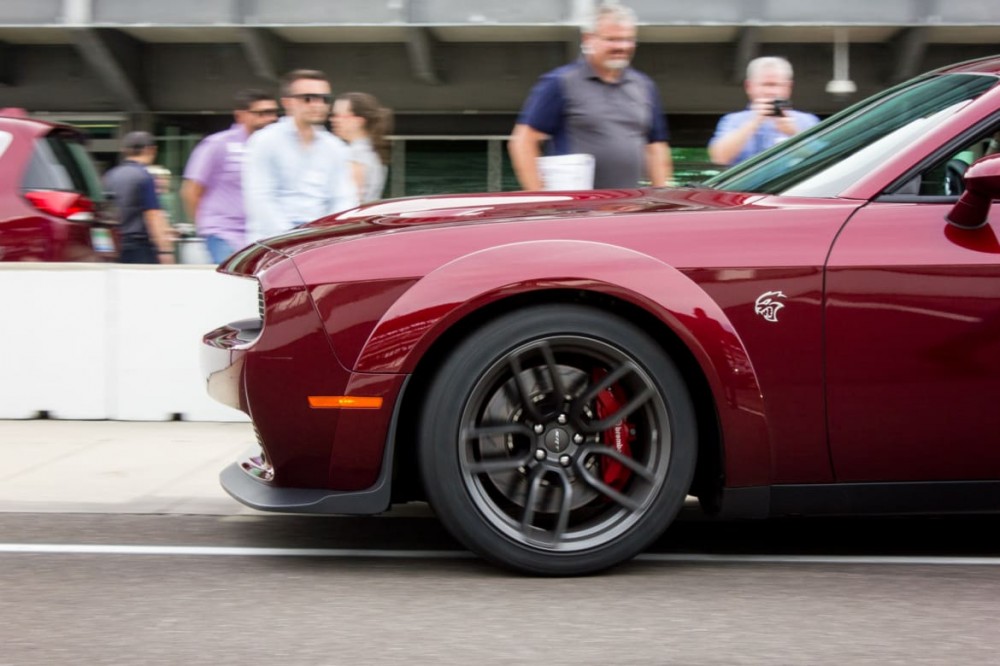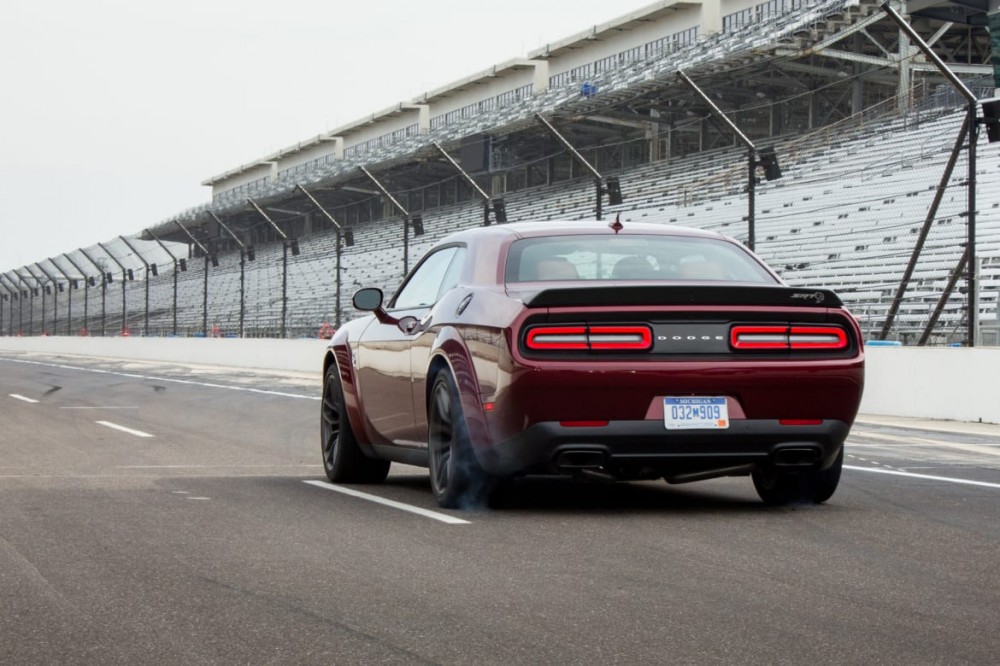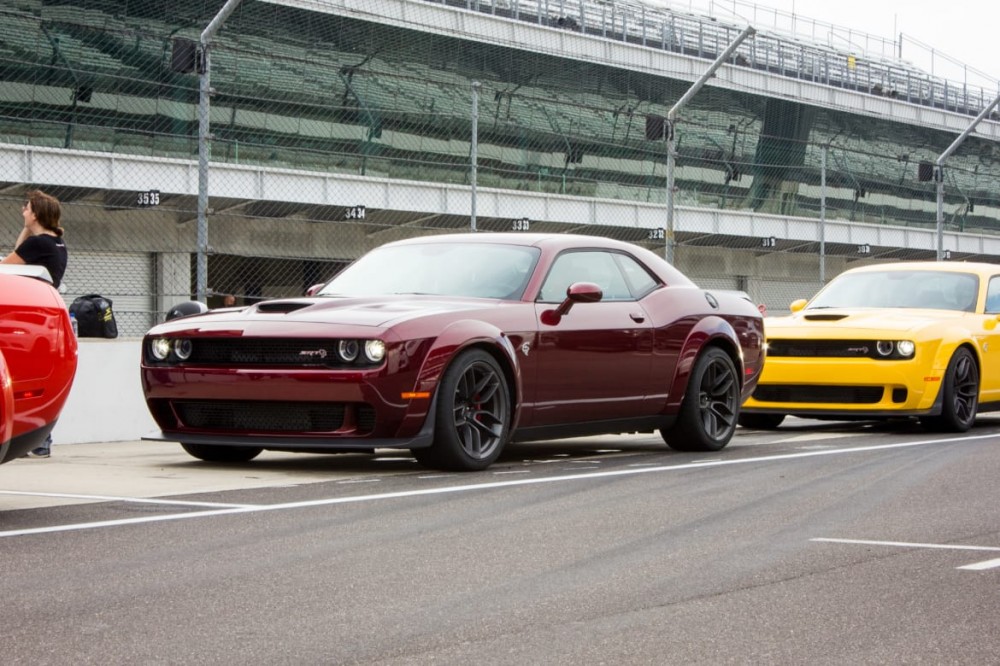CARS.COM — With wider, 305-mm-wide tires under the rear and front fenders, the 2018 Dodge Challenger SRT Hellcat Widebody is the one you want. I drove the new big-body Hellcat at the infield road course of Indianapolis Motor Speedway and on the streets surrounding Indy, where it displayed more competence putting its massive 707 horsepower power to the ground.
Related: Dodge Demonizes 2018 Challenger SRT Hellcat Widebody

We first must thank the 840-hp, drag-strip-ready Dodge Challenger SRT Demon for spawning the hardware that makes the Hellcat Widebody so good. The wider fenders are adapted from the Demon, allowing the Widebody to accommodate wheels measuring 20 inches in diameter by 11 inches in width with tires rated 305/35ZR20; Demon wheels are 18 inches by 11 inches wide. The Widebody's choice of tires is radically different from the Demon's, however: Pirelli P-Zero summer tires instead of the Nitto drag-racing street tires.
Dodge claims the Hellcat Widebody's extra grip brings its quarter-mile time down to 10.9 seconds compared with the narrow-body Hellcat's 11.2 seconds. On Indy's road course with turns, however, the Widebody isn't magically transformed into a track car: It still mostly drives like a Hellcat, with increased grip that makes the car less hairy when applying power and more confident during hard braking, but it's not any more agile or lighter feeling than the narrow-body car. Those wanting a track car for $70,000 have plenty of alternatives (Ford Mustang Shelby GT350, Chevrolet Camaro ZL1). The most exhilarating part of tracking the Hellcat Widebody remains on the straightaways where, at Indy, the opposing grandstands amplify the supercharger wail and the barking of the exhaust, creating a cannon-like explosion of racecar noises.

I discovered the most important difference was on the street driving a six-speed manual Hellcat Widebody: It's a considerably less evil car than the skinny-tire version. A regular Hellcat's clunky shifter is impossible to drive smoothly, and at low speeds the car is a twitchy, rolling burnout machine when stabbing the throttle. The Widebody feels like it took a chill pill — its tires no longer self-destruct but are more controllable with the accelerator pedal. The Widebody is also available with an eight-speed automatic.
The Widebody tracks exceptionally well at highway speeds. Often, wide summer tires are a recipe for a twitchy highway trip as the tires follow the grooves in the road or tug the wheel when rolling over a crease. The Widebody tracks as cleanly as the narrow-body car and is easy to steer even with the larger rollers thanks to the new electric-assist power steering that at no point felt unnatural or overboosted on the track or street compared with the hydraulic system of the regular Hellcat.

Add it all up, and the Widebody is the Hellcat that should have debuted in 2015. It isn't, however, and the Widebody's $72,590 starting price with destination and gas guzzler tax is $7,770 more expensive than the narrow-body Hellcat's $64,890 starting price.








